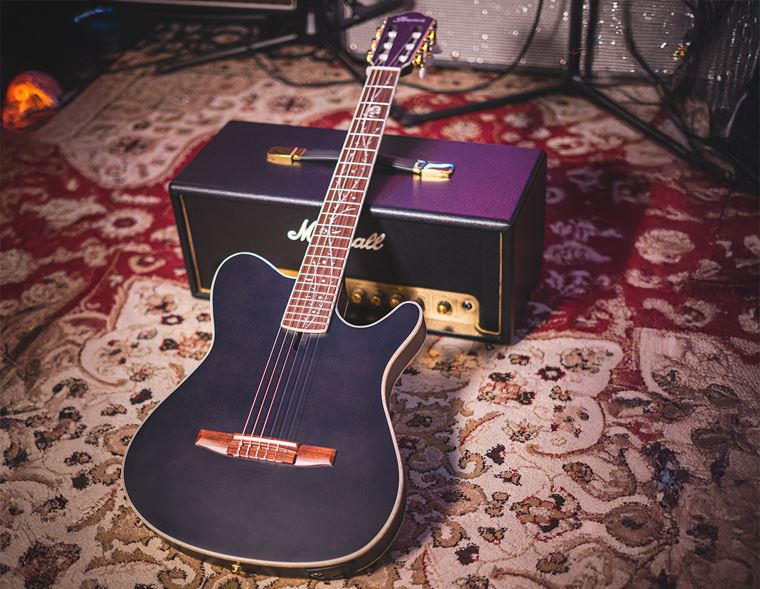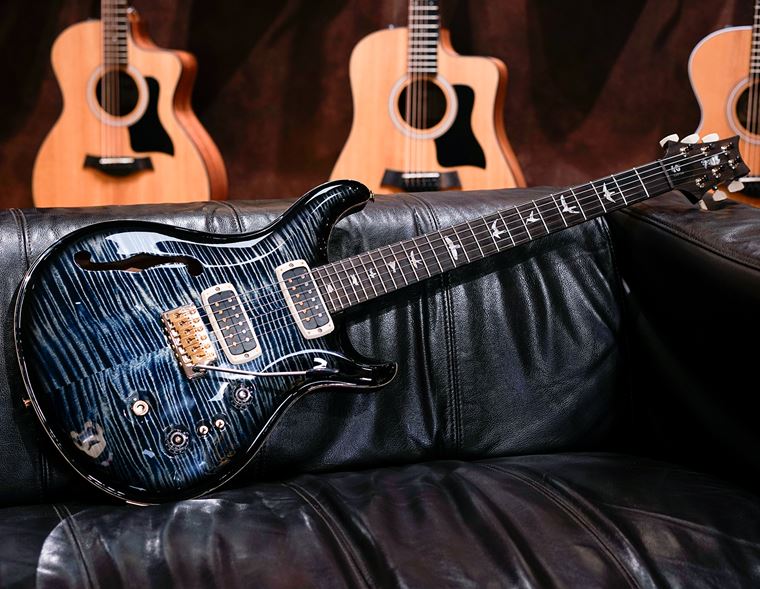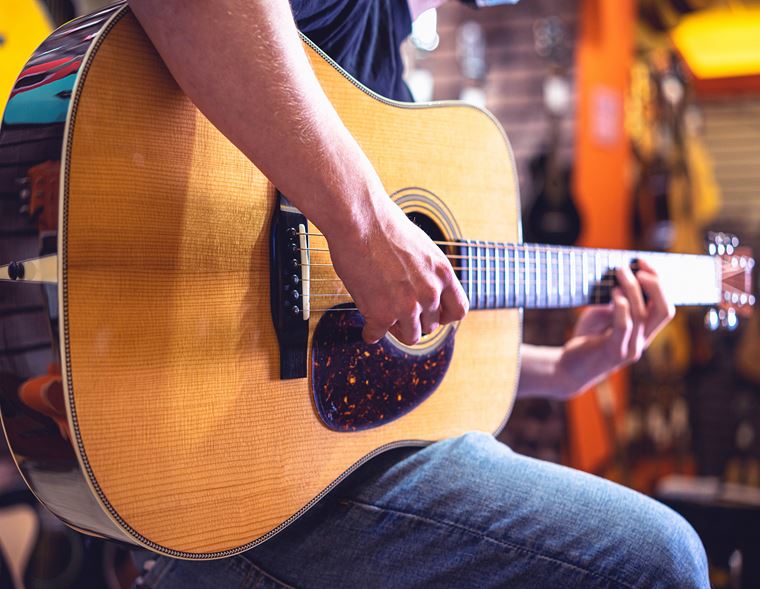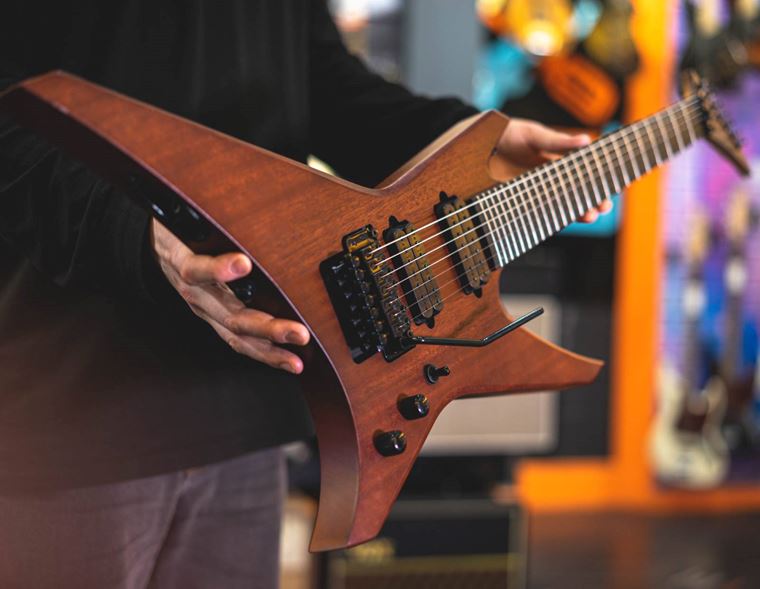Epiphone Acoustics: The Ranges Explained
You know Epiphone. You’ve seen Epiphone acoustic guitars all your life, from the homes of friends to the front covers of hit albums like Definitely Maybe. You’ve appreciated their beauty and good value, but maybe you’ve looked further into the brand and become a little confused about the number of ranges available.
Today, we want to take you through the various sub ranges and models out there. We want to help you understand what’s similar about the models and what’s different. In addition to the standard range, there is also the ‘Inspired by Gibson’ models and the ‘Masterbilt’ guitars, and even though they may look similar from time to time, there can still be relatively major differences to take note of. Read through, and afterwards you’ll be an Epiphone acoustic expert!
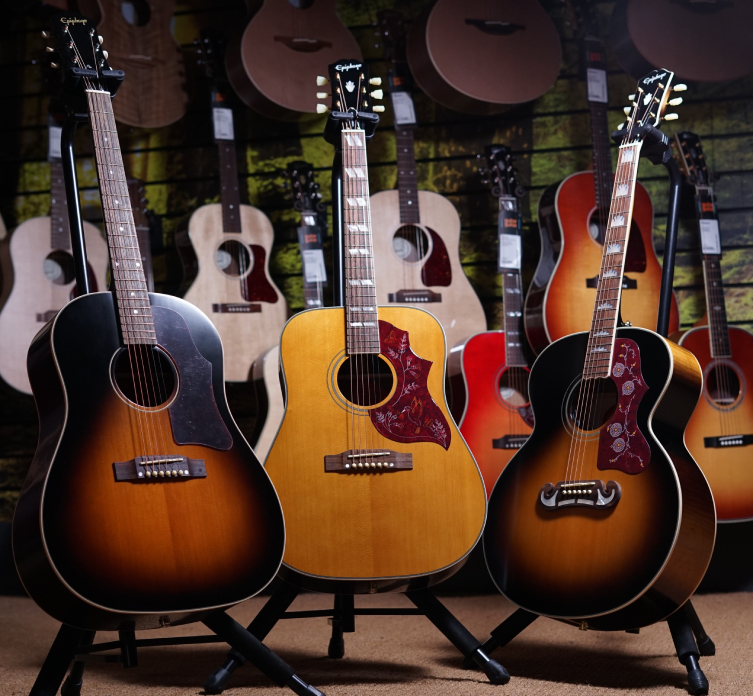
Epiphone Acoustic Guitar Ranges
1. Epiphone Masterbilt
The Epiphone Masterbilt collection is the brand’s top range of guitars outside of sporadic US-made guitars (more on that later). No typo, the name ‘Masterbilt’ has been in use since 1931, in the days before there was any brand connection to Gibson at all. Epiphone actually have an interesting and proud past of their own - one which predates Gibson by decades, actually - and this resurrected Masterbilt title is used to refer to high quality new guitars that heavily reference the guitars from that magical era.
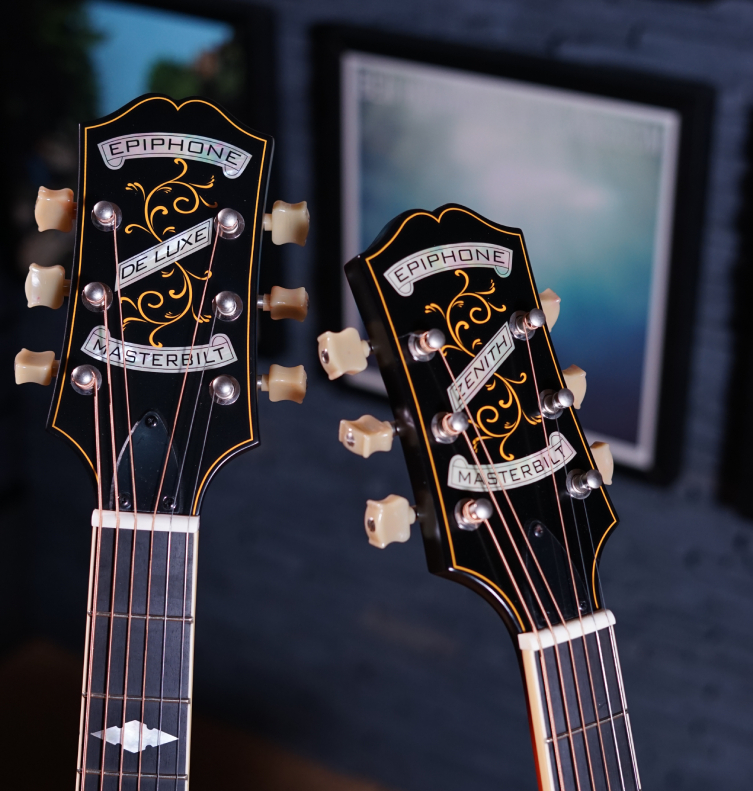
Today’s Masterbilt guitars echo the 1930s in their headstock shapes, inlay work and other decorative features. Masterbilt guitars are made from all-solid timbers, a sign of great quality and longevity. As you know, solid timbers resonate more freely and more effectively, and that results in richer tones that ‘season’ the more the instrument is played.
Masterbilt guitars are not created in huge numbers, so there is an air of exclusivity to them that makes them desirable for collectors as well as serious players. As you might expect, the instrument models on offer change from time to time, but there’s usually a selection of dreadnoughts available with either square or sloped shoulders, amongst other history-flecked designs.
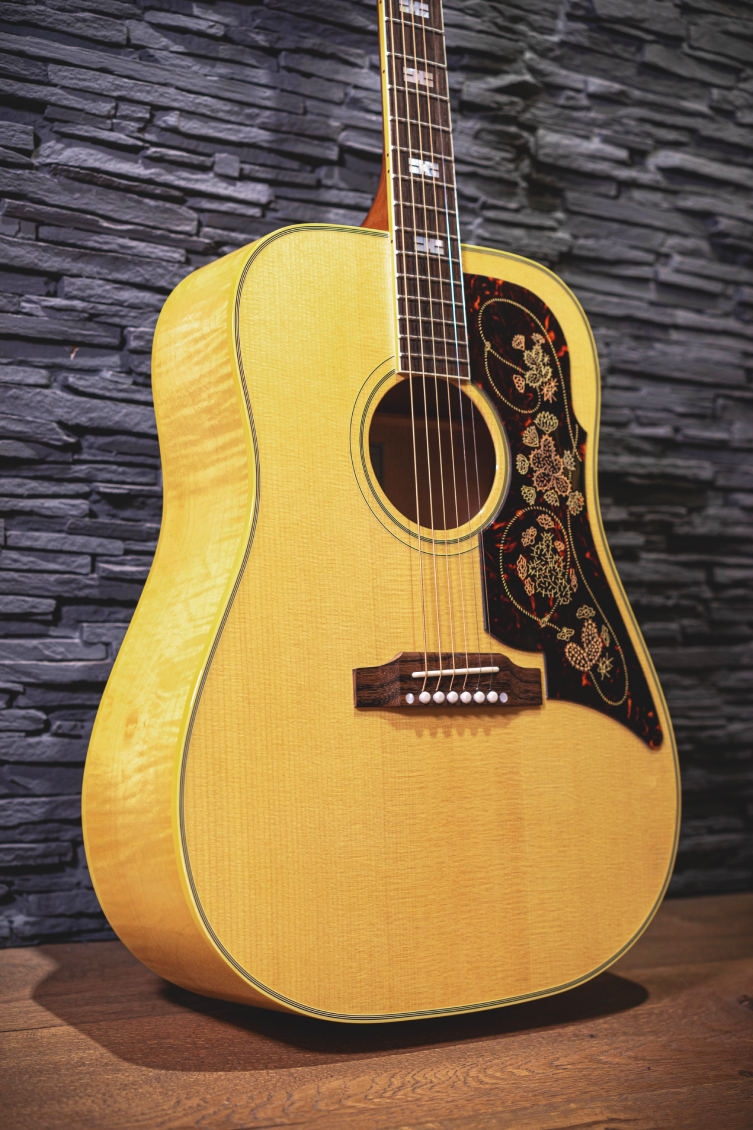
Certain Masterbilt models reference slightly more recent eras, too. The Epiphone Masterbilt Frontier, for example, takes its lead from the sort of 1960s guitar you’d see Gram Parsons playing at Altamont if you happened to step into Doc Brown’s DeLorean and jump back in time five or so decades. Period details such as the cacti and rope inlay design on the pickguard lend this guitar some distinct retro charm!
So, in short, Masterbilt guitars are designed in the US, built in China to exacting standards and provide an all-solid tone and performance to the professional player.
2. Epiphone Inspired by Gibson
The main range that Epiphone are making noise about right now is their Inspired by Gibson line. This, as the name suggests, plunders the family jewels, as it were, reaching back into parent company Gibson’s illustrious catalogue of iconic guitar designs and recreating them at a more affordable prince point.
Like the Masterbilt guitars we just looked at, these Inspired by Gibson models are all-solid, and tend to mirror the timber choices used on their Gibson namesakes. For example, the J-200 will marry a solid spruce top with solid maple for the back and sides, whereas the Hummingbird partners spruce to mahogany, just as the Gibson originals do.
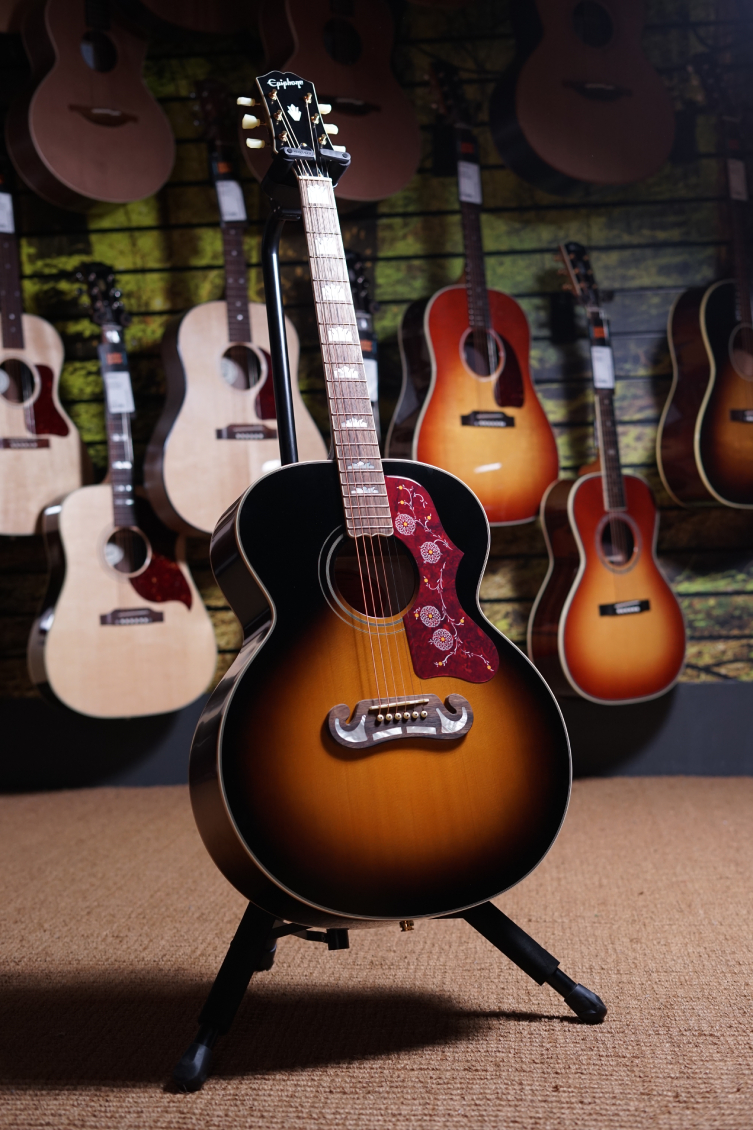
Vintage authenticity is high with these Epiphones: the outlines match up, the necks are carefully profiled and the colours are close to the originals, with Aged Gloss finishes and true-to-history sunbursts. All of the famous models you’d expect to see are included, from the J-45 to the Hummingbird and the aforementioned J-200.
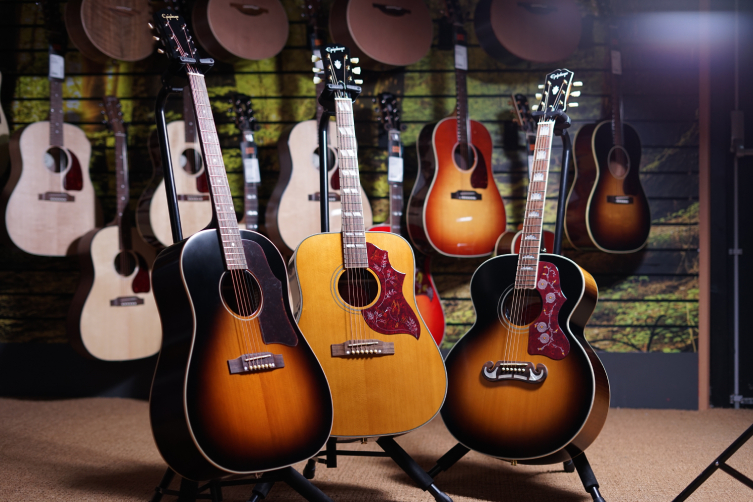
Performers who maybe can’t stretch to Gibson USA prices but still want a slice of that heritage will be well served by the Epiphone Inspired By Gibson range. Finer details within this range include quartersawn bracing (much stronger timber, therefore firmer vibrational response), Fishman pickup systems (hardly vintage but it’s top-line stuff) and bone nuts for that authentic tone and attack.

Performing strummers may love the large tone and projection available from the J-200, whilst players who indulge in a bit of everything - including chordal strumming and fingerpicked parts - may prefer the balanced tones available from the Hummingbird or J-45.

3. Epiphone Modern and Original Ranges
Our next two ranges today are worth explaining together, because they make up what we’d somewhat glibly refer to as ‘normal Epiphone’. By that we mean the instruments that are most often seen and played all over the world: the ones we’re all familiar with. The Epiphone Modern range comprises of even more affordable takes on those Gibson classics, whilst the Original range offers up new ideas and designs based on the overall Epiphone style (without any distinct emphasis on any particular historical model).
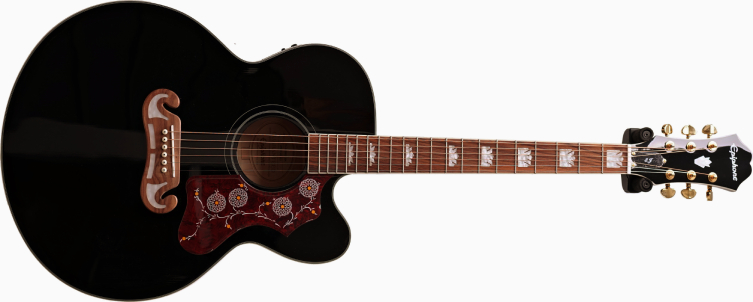
For example, the J-200EC Studio is of course a close take on the famous J-200 that we looked at earlier, but this one deviates from history by using a cutaway body shape for starters. Also, like most of the guitars in this area, it has a solid top only: the back and sides are made from layered plies of wood instead of solid timber. This actually isn’t a massive problem in terms of either tone or structure, since the top of a guitar is the main source for capturing vibrations and turning them into tone. If the top is solid - as they are with most of these guitars - then you are assured a good quality tone, which will also ‘season’ and improve the more the guitar is played. Less so than an all-solid guitar? Yes, indeed, but these things are all relative: most of the important tonal heavy-lifting is achieved by a solid top, so the compromise is a good one.
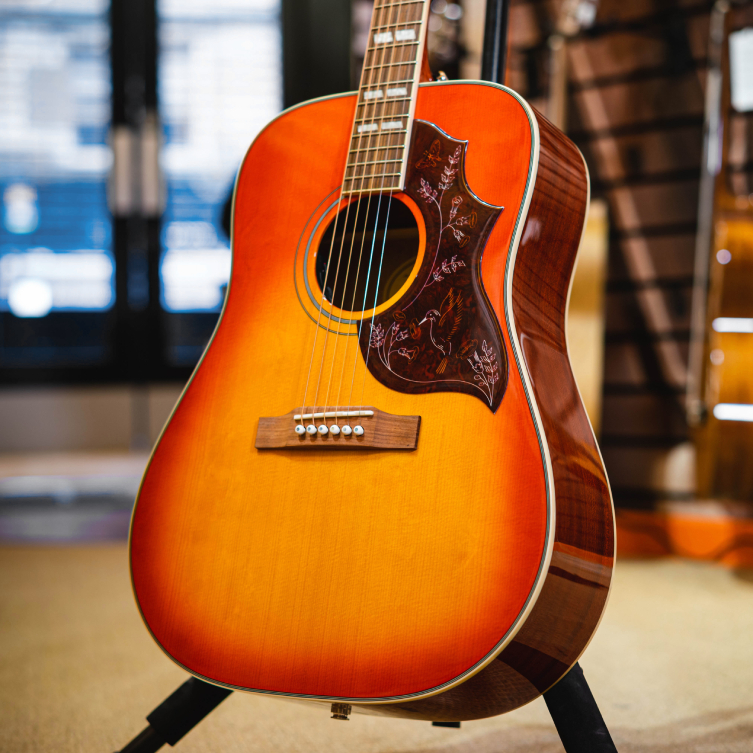
You can find Hummingbirds in this range, Dove models and the J-45, which is of course based on the world-famous Gibson slope-shouldered dreadnought which also featured in the Inspired by Gibson range. Though perhaps not quite as meticulously rendered as those more expensive Inspired by Gibson models, these guitars nonetheless display good levels of authentic detail, from body shape (apart from the headstocks of course) to the pickguards and bridges. These Epiphone Modern guitars are designed for gigging musicians and players who need dependable quality, great looks and reasonable prices.
The Epiphone Original range, on the other hand, include gig-friendly guitars such as the Songmaker, but also offer beginner guitars like the Starling. As you’d no doubt guess from the title, thes guitars are not necessarily related to any direct Gibson models, though it’s clear that the Starling is a smaller Hummingbird, more or less! Choosing to include parts of the Gibson culture in certain places and not in others makes the Original range its own beast, with space to create guitars that are perhaps more contemporary than classic. The Originals tend also to be more affordable, since they are more economically priced.

The original range is where you’ll find great value instruments such as the Songmaker 12-string, a square shouldered dreadnought that’s highly affordable and retains much of that trademark Epiphone look and vibe. Low prices don’t have to mean poor quality these days at all, but it is worth understanding that there won’t be solid tops on many of the cheaper guitars. This doesn’t necessarily mean a poor sounding guitar in the slightest, but it does mean that the instrument will not ‘season’ and improve in sound as it ages, as a solid-topped or all-solid acoustic guitar would. Bear that in mind and you can’t go wrong, particularly if value is a key factor.
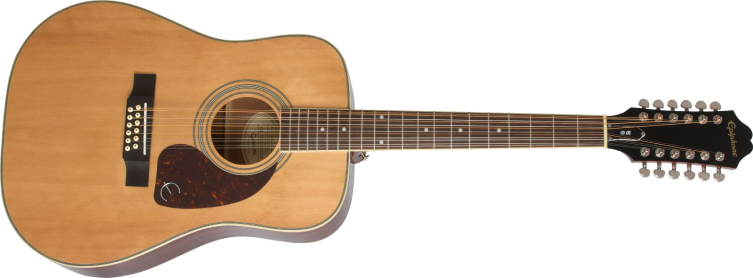
4. Made in the USA
At the other end of the spectrum are the very few Epiphone acoustics made in the USA. These are mostly based on historical guitars that were produced in America back in the day, so you’ll mainly see models like the Texan, which was Epiphone’s own design.

What you wont see are things like Hummingbirds and J-200’s, since those are originally Gibson designs and are taken care of through the Inspired By Gibson range. US-made Epiphones are a rewarding subject for collectors: historical examples are often excellent quality and are of course less expensive than Gibson-branded guitars. This is probably why newer US-made reissues are held in equally high regard, as well as their relative scarcity on the market. If you find one, make sure you try it out straight away!
An Epiphone Acoustic for Everybody
So, we’ve seen a few nice examples of Epiphone’s acoustic offerings today. We’ve checked out their most budget-friendly models, their gig-friendly mid priced instruments, and their top-tier masterpieces. Each is infused by not only Gibson’s associative splendour but Epiphone’s own magic dust. It’s easy to forget that they were once the main guitar force on the market, and Gibson’s acquisition of them (suggested by a shrewdly-thinking Les Paul) was as much about removing competition as it was about attaining a great asset.
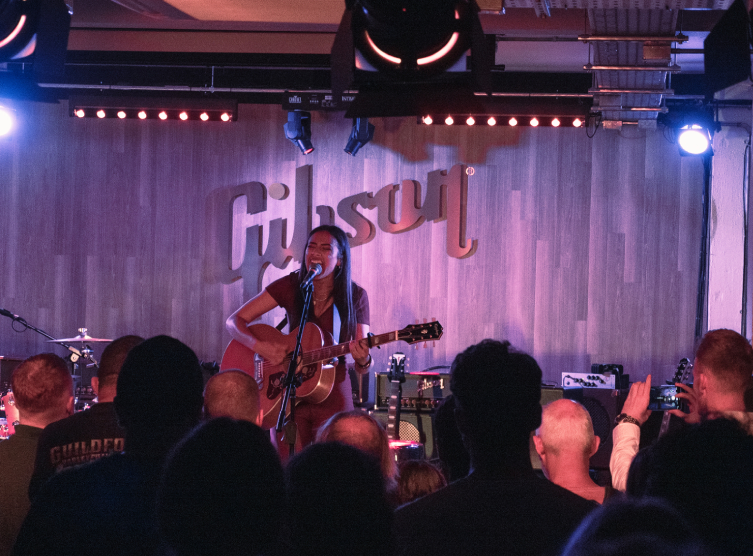
Epiphone are maybe stronger now than ever before, and whether you love their Gibson-orientated models or their own original designs, there’s an Epiphone acoustic out there for you!



